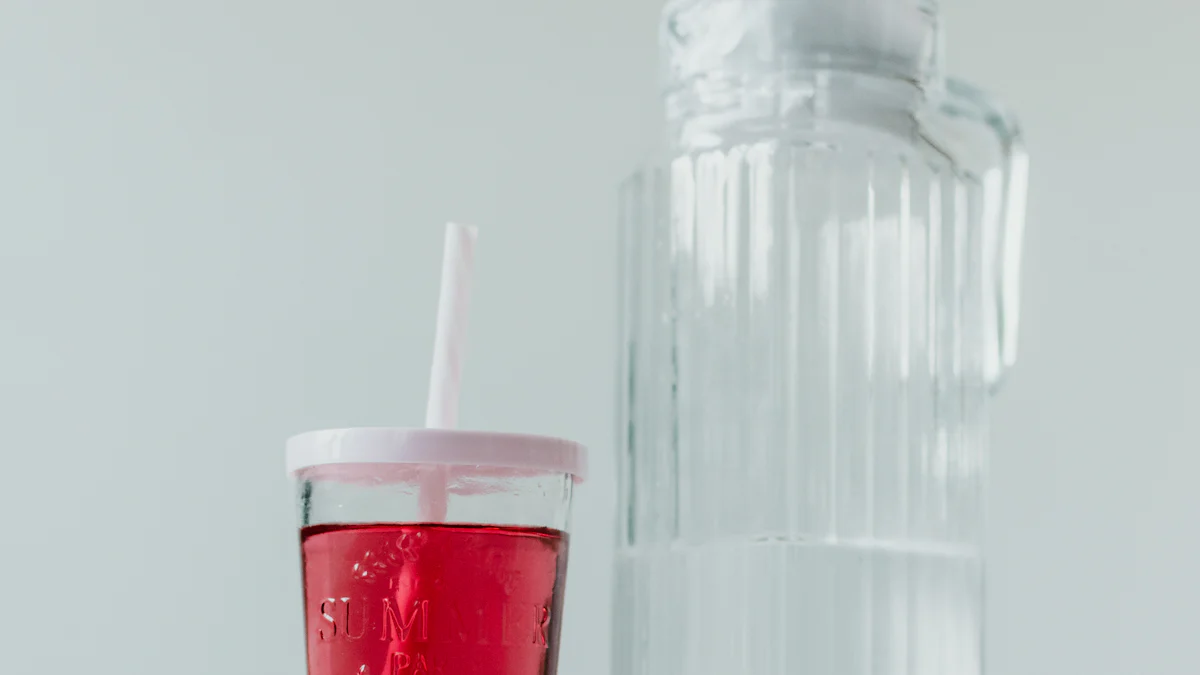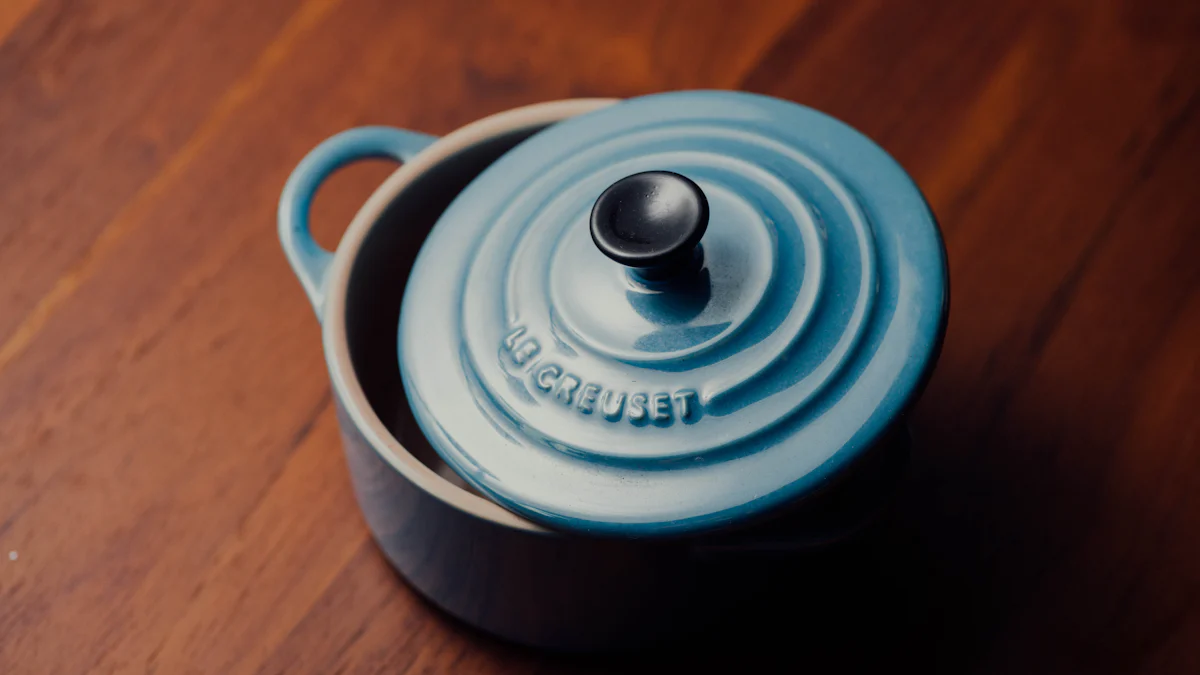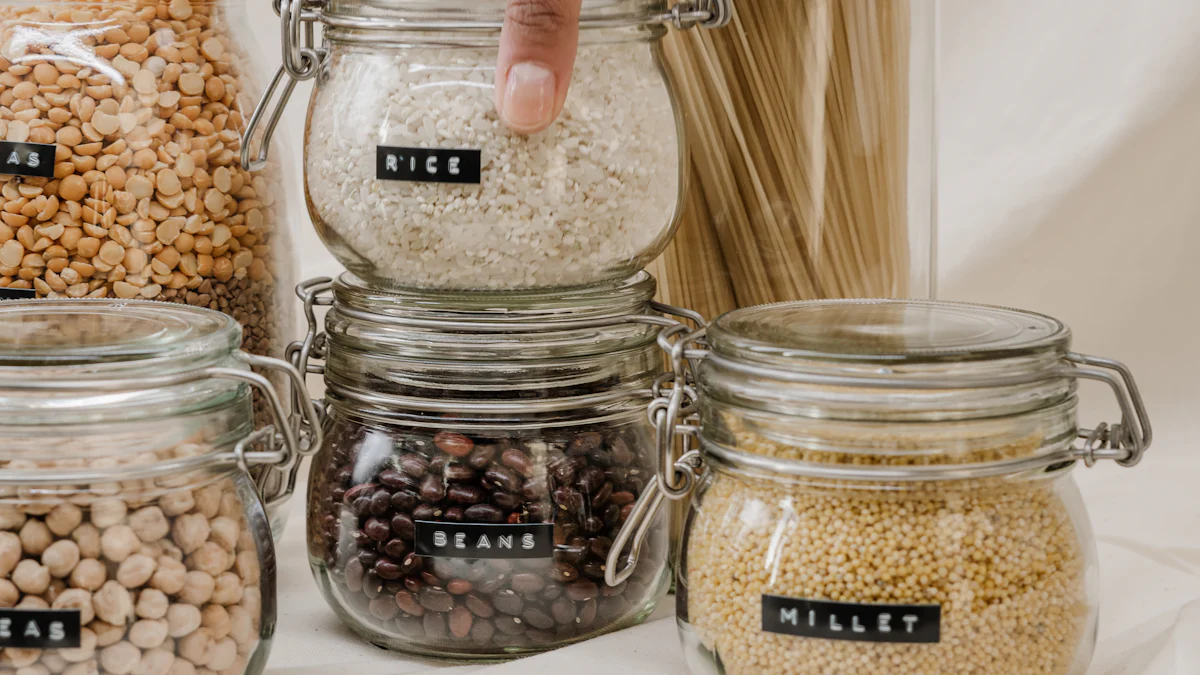
When choosing between a glass lid and a silicone lid for cookware, you might wonder which one lasts longer. Durability plays a crucial role in this decision. A durable lid ensures that your investment stands the test of time, providing reliable performance in your kitchen. You want a lid that can withstand daily use without showing signs of wear. By understanding the durability factors of each type, you can make an informed choice that benefits your cooking experience and budget.
Durability Factors
1. Material Properties
a. Strength and Flexibility
When considering the strength and flexibility of lids, you need to evaluate how each material performs under pressure. A glass lid offers significant strength due to its rigid structure. It can withstand substantial weight without bending or warping. However, this rigidity means it lacks flexibility. If dropped, a glass lid is more likely to shatter. On the other hand, silicone lids excel in flexibility. They can bend and stretch to fit various container sizes, making them versatile in different kitchen scenarios. This flexibility also means they are less likely to break when subjected to stress.
b. Heat Resistance
Heat resistance is crucial for any kitchen lid. Glass lids can endure high temperatures, making them ideal for stovetop cooking and oven use. They maintain their shape and integrity even when exposed to direct heat. Silicone lids for pots also offer good heat resistance, though not as high as glass. They can handle moderate heat levels, suitable for microwave use and covering hot dishes. However, you should avoid exposing silicone lids to extreme temperatures to prevent damage.
2. Resistance to Wear and Tear
a. Impact Resistance
Impact resistance determines how well a lid can withstand physical shocks. Glass lids, while strong, are vulnerable to impacts. A fall from a countertop can result in cracks or complete breakage. Silicone lids, with their flexible nature, absorb impacts better. They bounce back from drops without sustaining damage, making them more resilient in busy kitchens.
b. Scratch Resistance
Scratch resistance affects the appearance and longevity of a lid. Glass lids for pots and pans resist scratches well, maintaining a clear and pristine look over time. This quality makes them aesthetically pleasing and easy to clean. Silicone lids, however, may develop surface marks with frequent use. While these marks do not affect functionality, they can alter the lid’s appearance.
3. Maintenance Requirements
a. Cleaning and Care
Proper cleaning and care extend the life of your lids. Glass lids require careful handling during washing to prevent accidental drops. They are dishwasher safe, but hand washing is recommended to avoid potential damage. Silicone lids are also dishwasher safe and easy to clean. Their non-stick surface prevents food from clinging, simplifying the cleaning process.
b. Storage Considerations
Storage plays a role in maintaining lid durability. Glass lids need careful storage to avoid chipping or breaking. You should place them in a secure spot where they won’t fall. Silicone lids, being flexible, can be stored in tight spaces. You can fold or stack them without worrying about damage, making them convenient for small kitchens.
Glass Lid

1. Strengths of Glass Lids
a. Heat Resistance
A glass lid excels in heat resistance. You can use it confidently on the stovetop or in the oven. It withstands high temperatures without losing its shape or integrity. This makes it a reliable choice for cooking tasks that require direct heat exposure. You won’t have to worry about the lid warping or melting, ensuring consistent cooking results.
b. Aesthetic Appeal
The aesthetic appeal of a glass lid is undeniable. Its transparent nature allows you to monitor your cooking without lifting the lid. This feature not only adds convenience but also enhances the visual appeal of your kitchenware. The sleek and clear design complements various cookware styles, making it a popular choice for those who value both function and form.
2. Weaknesses of Glass Lids
a. Fragility
Despite its strengths, a glass lid has a notable weakness: fragility. You must handle it with care to avoid accidental drops. A fall can lead to cracks or complete breakage. This fragility requires you to be cautious during use and storage, as mishandling can result in the need for a replacement.
b. Weight
The weight of a glass lid can also pose a challenge. It tends to be heavier than other lid materials. This added weight might make handling cumbersome, especially when dealing with large pots or pans. You may find it less convenient for quick tasks where ease of use is a priority.
3. Typical Lifespan of Glass Lids
The typical lifespan of a glass lid depends on how you handle and maintain it. With proper care, it can last for many years. Avoiding impacts and storing it securely will help extend its life. Regular cleaning and gentle handling ensure that your glass lid remains a durable and reliable kitchen companion.
Silicone Lids

1. Advantages of Silicone Lids
a. Flexibility and Versatility
Silicone lids offer remarkable flexibility. You can stretch them to fit various container sizes, making them incredibly versatile in your kitchen. This adaptability allows you to use one lid for multiple purposes, reducing the need for different sizes. The snug fit they provide helps in preserving food freshness by creating an airtight seal. This feature makes silicone lids a practical choice for those who value convenience and efficiency.
b. Lightweight
The lightweight nature of silicone lids makes them easy to handle. You can effortlessly place them on containers without adding significant weight. This quality is particularly beneficial when dealing with large pots or pans. You won’t struggle with heavy lifting, making your cooking experience more enjoyable. The ease of use that comes with lightweight lids enhances their appeal for everyday kitchen tasks.
2. Disadvantages of Silicone Lids
a. Heat Limitations
While silicone lids offer good heat resistance, they have limitations. You should avoid exposing them to extremely high temperatures. They perform well in microwaves and for covering hot dishes, but direct stovetop or oven use can lead to damage. Understanding these limitations helps you use silicone lids effectively without compromising their integrity.
b. Potential for Staining
Silicone lids may develop stains over time. Certain foods, especially those with strong colors or oils, can leave marks on the surface. Although these stains do not affect functionality, they can alter the appearance of the lids. Regular cleaning and prompt washing after use can help minimize staining, keeping your lids looking fresh and clean.
3. Expected Longevity of Silicone Lids
The longevity of silicone lids depends on how you use and care for them. With proper maintenance, they can last for many years. Their durability stems from their ability to withstand regular use without breaking or warping. Investing in high-quality silicone lids ensures you get the most out of them. By following care instructions and avoiding extreme conditions, you can enjoy the benefits of silicone lids for a long time.
Comparative Analysis
1. Durability in Everyday Use
a. Performance in Various Conditions
When you use lids daily, their performance in different conditions becomes crucial. A glass lid excels in high-heat environments like stovetops and ovens. It maintains its shape and integrity, providing reliable coverage for your cooking needs. However, you must handle it carefully to avoid breakage. Silicone lids, on the other hand, adapt well to various container sizes due to their flexibility. They perform admirably in microwaves and for covering hot dishes. Their ability to withstand moderate heat makes them versatile for everyday use. You can rely on silicone lids for tasks that require a snug fit and airtight seal.
b. User Experiences
User experiences offer valuable insights into the durability of lids. Many users appreciate the transparency and heat resistance of glass lids. They enjoy monitoring their cooking without lifting the lid. However, some express concerns about the fragility and weight of glass lids. Silicone lids receive praise for their flexibility and lightweight nature. Users find them easy to handle and store. They appreciate the versatility of silicone lids in fitting various containers. Some users note potential staining issues but value the ease of cleaning and maintenance.
2. Cost vs. Longevity
a. Initial Investment
When considering the initial investment, you must weigh the cost against the benefits. Glass lids often come with a higher price tag due to their material and design. They offer durability and aesthetic appeal, making them a worthwhile investment for those who prioritize these features. Silicone lids, generally more affordable, provide excellent value for their versatility and ease of use. You can find high-quality silicone lids at a reasonable price, making them accessible for budget-conscious consumers.
b. Long-term Value
Long-term value depends on how well a lid withstands regular use. Glass lids, with proper care, can last for many years. Their durability and heat resistance make them a reliable choice for long-term use. However, you must handle them carefully to avoid damage. Silicone lids also offer impressive longevity. Their flexibility and resistance to wear and tear ensure they remain functional over time. By investing in quality silicone lids, you can enjoy their benefits for years, reducing the need for frequent replacements.
In your quest for a durable lid, both glass and silicone options present unique advantages. Glass lids offer excellent heat resistance and aesthetic appeal, making them ideal for high-heat cooking. However, they require careful handling due to their fragility. Silicone lids, with their flexibility and lightweight nature, adapt well to various kitchen tasks. They provide a practical solution for everyday use. For long-term investment, consider your cooking habits and storage needs. If you prioritize heat resistance and visual appeal, a glass lid may suit you best. For versatility and ease of use, silicone lids offer great value.
Post time: Jan-02-2025


